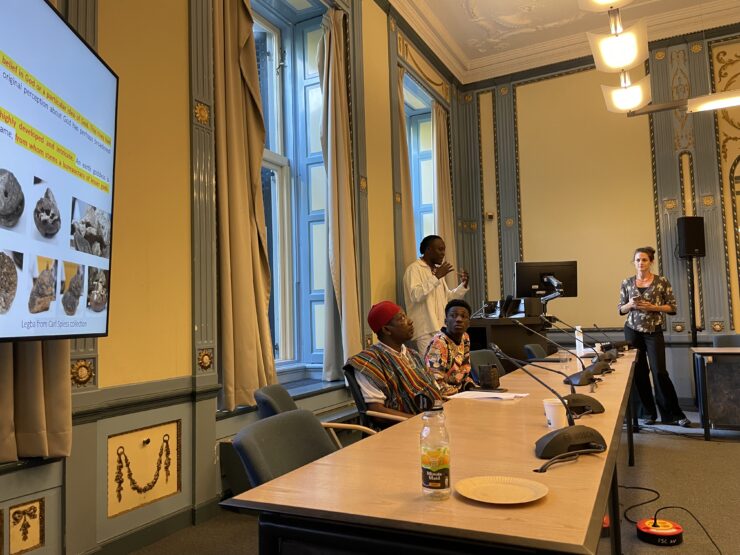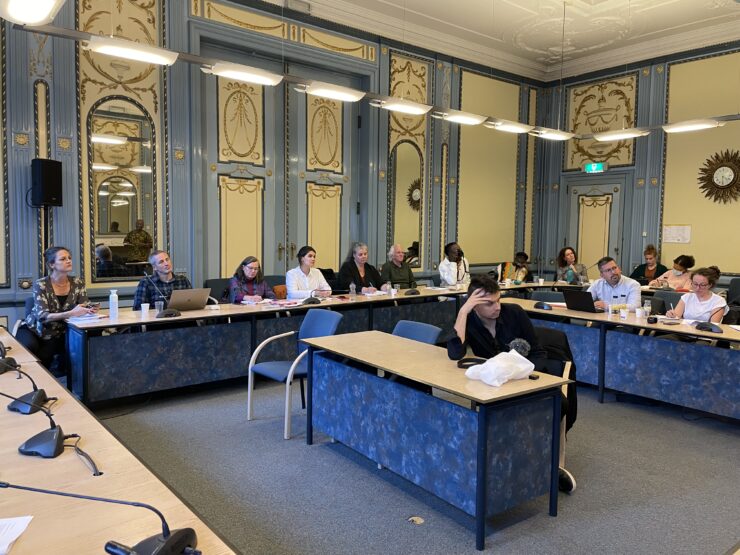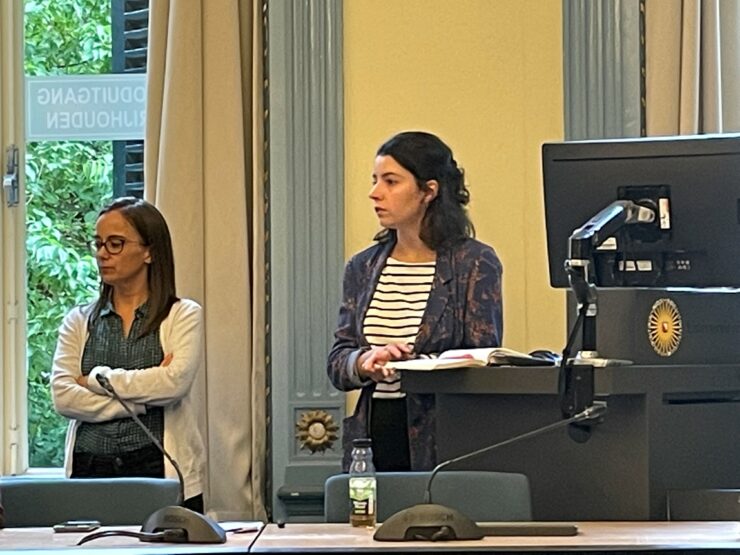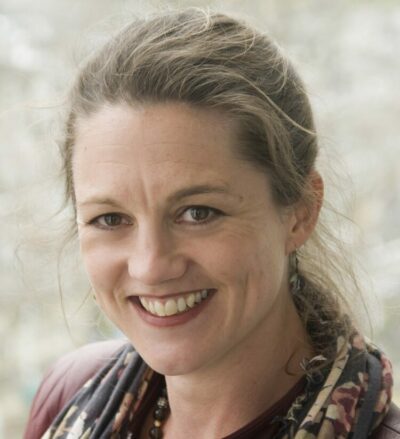Between 19 and 21 September 2022, the Department of Philosophy and Religious Studies at Utrecht University hosted the international workshop ‘Unpacking Missionary Collections.’ The workshop was organized by the subproject ‘Heritage and the Question of Conversion’ of the ‘Pressing Matter’ program and the research program ‘Religious Matters in an Entangled World’ (Ana Rita Amaral, Marleen de Witte, Birgit Meyer, Peter Pels and Amélie Roussillon, assisted by Charlotte Tiebosch). Designed as a platform for connecting, exchanging, and collaborating, it brought together 30 international scholars, museum professionals and religious specialists (from Ghana, Togo, Germany, the UK and the Netherlands) to discuss their work of unpacking collections of items held in museums, mission archives and related sites and assembled by Catholic and Protestant missionaries in colonial times. Various scholars have studied the collecting activities of missionaries in areas colonized by European powers, but so far the insights gained have barely been synthesized across various disciplines. While colonial collections and the restitution of looted art currently are subject to intense public and scholarly debates, the role of missionaries in assembling objects that found their way, often through crooked trajectories, into ethnological and other museums has received comparatively less attention. The workshop made clear that a focus on items gathered by missionaries or in contexts of missionary work is a productive starting point for a critical analysis of the provenance, conservation and future re-purposing of objects in and beyond current ethnological and other museums. The first two days of the workshop took place in the Sweelinckzaal at the Drift in Utrecht and consisted of presentations, round tables and lively discussions, while the third day was devoted to a ‘riding seminar’ with excursions to the Mission Museum in Steyl and the Afrika Museum in Berg and Dal.
On Monday morning Chris Wingfield (Sainsbury Research Unit, University of East Anglia) kicked off with his ‘artefactual history’ of the London Missionary Society Museum. Stressing the link between the missionary enterprise and British imperialism, he showed how artefacts were involved in telling stories of Christian/civilizing mission but can also be made to tell history otherwise and, to some extent, reverse earlier processes of ‘objectification.’ Jan Hüsgen (advisor Department of Cultural Good and Collections from Colonial Contexts, German Lost Art Foundation) presented his project of mapping missionary collections from German-speaking areas. Beyond the complexities of such an ambitious project, he made clear that overviews like this cannot only form the basis for further provenance research and critical revision of ‘collecting’ in the context of missionary societies, but also be important starting points for cooperation with societies of origin. Julia Binter’s (Zentralarchiv, Ethnologisches Museum Berlin) discussion of the collaborative research, exhibition and repatriation project on Namibian collections at the Ethnologisches Museum in Berlin called attention to the gendered silencings in colonial and missionary archives. Tracing women’s agency in missionary contact, she highlighted the affordances of women’s things to tell different stories against the grain. The project also gave crucial insights into what working with collections that include trauma means for collaborative research and artistic practices.

The general discussion that followed evolved around the issue of restitution, with questions raised about the desirability and ethics of returning objects. Is return an ongoing form of purification, or even colonization? If restitution can be considered as form of repair, what is it repairing, for whom, and in which manner? How are colonial structures still at work in decision processes of selecting objects for research and restitution? And if restitution is about the transfer of decision power about where an object should be (not necessarily the same as transfer of objects), to what extent do we also consider non-human agents like gods and spirits in this process?
The full afternoon was devoted to a roundtable on the ‘Legba-Dzoka Project’, a collaborative research project on a collection of items assembled by the missionary Carl Spiess (Norddeutsche Missionsgesellschaft) in West Africa for the Übersee-Museum Bremen. Research team members Sela Adjei 8National Film and Television Institute, Ghana), Kokou Azamede (German Studies, University of Lomé), Kodzo Gavua (Department of Archaeology and Heritage Studies, University of Ghana), Angelantonio Grossi, Malika Kraamer (Markk, Hamburg), Birgit Meyer, Silke Seybold (curator Africa, Übersee-Museum Bremen), Ohiniko Mawussé Toffa (Ethnlogical Museums Leipzig and Dresden), Christopher and Kofi Voncuvovi (AfrikanMagickTemple, Accra, see also ‘Vodu and Social Media in Ghana‘) all reported on the research they conducted in Bremen in the week preceding this workshop (see also ‘the legba-dzoka project‘. The session brought to the fore the great value of bringing together different kinds of knowledge and expertise – academic, curatorial, spiritual, artistic – around one specific collection. One important theme brought up during this session, but running throughout the workshop presentations and discussions, was the decolonization of knowledge production about material culture, including missionary collections. The coloniality and racism inherent in certain terminologies and categories was stressed, and the exclusionary epistemologies that often inform research practices. In this light, it is of vital importance to do collaborative work, with people from collections’ societies of origin involved as equal partners (not as ‘token collaborators’). Inclusivity also means including other knowledges, such as that of religious/spiritual practitioners, without privileging one type of information/knowledge over another. For instance, research methods in this project include consultation of legba and dzoka entities connected to material items. A crucial question is who is to benefit from the research that we do, and in what way?

In the evening, discussions continued in a pleasant and relaxed atmosphere as we enjoyed drinks and diner in De Zalen van Zeven, in the Boothstraat Church around the corner.
Day 2 took off with a presentation by Karen Jacobs (Sainsbury Research Unit, University of East Anglia). Discussing examples of Fijian dress and tattooing styles and Kamoro (West Papua) wood carvings, she called attention to the role of local people in missionary collecting as a collective process involving a variety of cultural exchanges and to objects’ ongoing legacies in the field as part and parcel of material missionary heritage. Isabella Bosza (Leibniz-Institute for European History) talked about her work on Basel missionary collecting in Cameroon, stressing the unequal power relations and ambivalent relationships between Cameroonian actors and missionaries that speak from archival sources. The acquisition and exhibition histories of ritual figures made clear how missionary and colonial interests overlapped and worked together to abolish certain local practices. Theo Weiss (Sainsbury Center for Visual Arts) shifted perspective to Nigerian museums and the ‘conversionary collateral’ in the aftermath of missionization: objects no longer wanted by what had become thoroughly Christianised communities. Placing the missionary process in a longer perspective – from the impact of European missionization on handling material culture to later processes of heritagization and today’s presence of Pentecostalism in the museum – brought into focus the polyvalent status of this material in contemporary Nigeria.

Issues raised during the discussion included the different ideas on what a museum is and does, as a disenchanting or an enchanting institution, as a container of power; and the complexities of iconoclasm as European missionary iconoclasm came to interact with indigenous practices of destroying or casting away powerful objects. From a practitioner’s perspective Christopher commented that there is a proper way to invoke a spirit to work for you, but also to dispose of it, to dismiss them back into the spirit world.
In the afternoon the researchers of the ‘Heritage and the Question of Conversion’ project presented their work. Marleen de Witte looked at the cumulative conversions of Asante shrine figures in the Afrika Museum as they moved through different religious, colonial, art and heritage contexts. Amélie Roussillon spoke about the collecting-as-converting practices of the Protestant Utrecht Missionary Society in Dutch New Guinea. Ana Rita Amaral focused on Dutch Spiritan Collections from Colonial Angola, addressing the transimperial character of Spiritan practices of collecting and circulation. Peter Pels (Anthropology, Leiden University) talked about the historical transitions of the Afrika Museum and the evolving problem of the materiality of the “converted artefact.” Taken together, all talks reflected on conversion as a lens for looking at missionary collections and heritage, considering both the Christian project of conversion at the base of missionary collecting and the conversion of the artefacts thus collected into new kinds of things, or indeed into things.

The day concluded with a round table discussion with Wonu Veys (National Museum of World Cultures), Jules Rijssen (ImagineIC), and Mary Bouquet (University College Utrecht), who were invited to reflect on “the materialities of conversion and the conversion of materialities” from their experience of working in the museum and heritage sector. Questions for discussion included: What is the place of religion in the debates about the histories, legacies and futures of museums and collections? What happens to religion-related materials once they enter the museum? What is the relevance of considering religious matters for museum practice? Among the issues raised by the speakers were the difficulty and desirability of categorizing objects as “religious”; the importance of careful attention to terminology and appropriate language in addressing certain kinds of objects; of paying proper respect to and involving indigenous communities in exhibiting and conservation practice, with listening and not imposing one’s view as key. From the discussion that followed it became clear how important it is to acknowledge that the conditions and circumstances under which many of these items were collected, as well as displayed and studied, often involved strong hierarchies and violence of various kinds, with conversion assessed as psychological violence by one participant. In many ways, the past is not really past, since the legacies of colonial racism and exoticism are still with us, affecting us in uneven ways. So while conducting object-centered research on missionary collections opens up exciting academic debates, e.g. about the religion-materiality nexus, it is important to remember that museums and their collections are not just ‘interesting’ and ‘exciting’ to study. They are also deeply discomforting, painful, and enraging. How to accommodate and respond to this is a big challenge for museums and scholars alike. Again, collaboration and co-creating future imaginaries are the sine-qua-non, but this also needs, as some of the participants from Ghana insisted, critical reflection on “the role of those of us from the continent and how this can be made beneficial to our communities.”
Day 3 offered participants the opportunity to see and learn about some of the Catholic missionary collections in the Netherlands, with excursions to the Mission Museum in Steyl and the Afrika Museum in Berg and Dal. In the bus to Steyl, Paul Voogt and Moed de Vries, curators of the Mission Museum, gave us an introduction to the museum and the Society of the Divine Word that founded it. In addition, Peter read out a text written by Wiel Eggen of the African Mission Society as an introduction to the SMA-collection kept in the Mission Museum’s depot, which the SMA kindly permitted us to visit as well. After a warm welcome by the museum staff, the group dispersed to see the museum’s natural history and ethnographic collections, which are presented as a “museum in a museum”: unchanged since 1934. This includes, as collection manager Nina van der Werf explained, its spatial arrangement according to the evolutionist view of civilization in vogue at the time: China, Indonesia and Japan up front as more developed civilizations, Papua in the middle, and a small Africa section at the far (and lowest) end). While workshop participants explored the exhibits, finding and discussing specific objects of interest, Christopher and Kofi Voncujovi went to the depot upstairs, accompanied by Paul and Nina, to engage with some items from the SMA-collection from their expertise as vodun and ifa priests. As they had also done in the Übersee-Museum Bremen, they performed a spiritual reading to contact and consult the spirits connected to a number of spiritual objects related to the vodun tradition from the Ghana/Togo/Benin area, which Nina had selected and laid out on a table. The session provided important insights into what happens – spiritually, epistemologically, practically – when one takes missionary collections as living heritage, as indeed spirits were found to be active.
After lunch the trip continued to Berg and Dal to visit the Afrika Museum. Founded in 1957 as a mission museum by the Congregation of the Holy Spirit, today’s Afrika Museum, now part of the National Museum of World Cultures, has a large part of the collection of its founding fathers on exhibit. Some of this is used in the new permanent exhibition ‘Inspiring Africa’, which presents the diversity, dynamism and complexity of the continent: from independence movements, religion and identity, migration and trade links with the Netherlands to world views, popular culture, art and design. The Religion and Society exhibition on the first floor presents the larger part of the Spiritan collection and drew most interest from workshop participants. Closely in line with the missionaries’ earlier collecting and exhibition framework, the display aims to provide insight into traditional African religious beliefs and practices, as related to the cycle of life, healing and divination, protection against evil, and living with ancestors. Visiting the exhibitions with this diverse group of participants sparked again many important reflections that made evident that the work of ‘unpacking missionary collections’ and envisioning their possible futures is an urgent, multi-faceted but also challenging process that requires ongoing collaboration with scholars, practitioners, heritage professionals and artists from countries and communities of origin and their diasporas in Europe.

